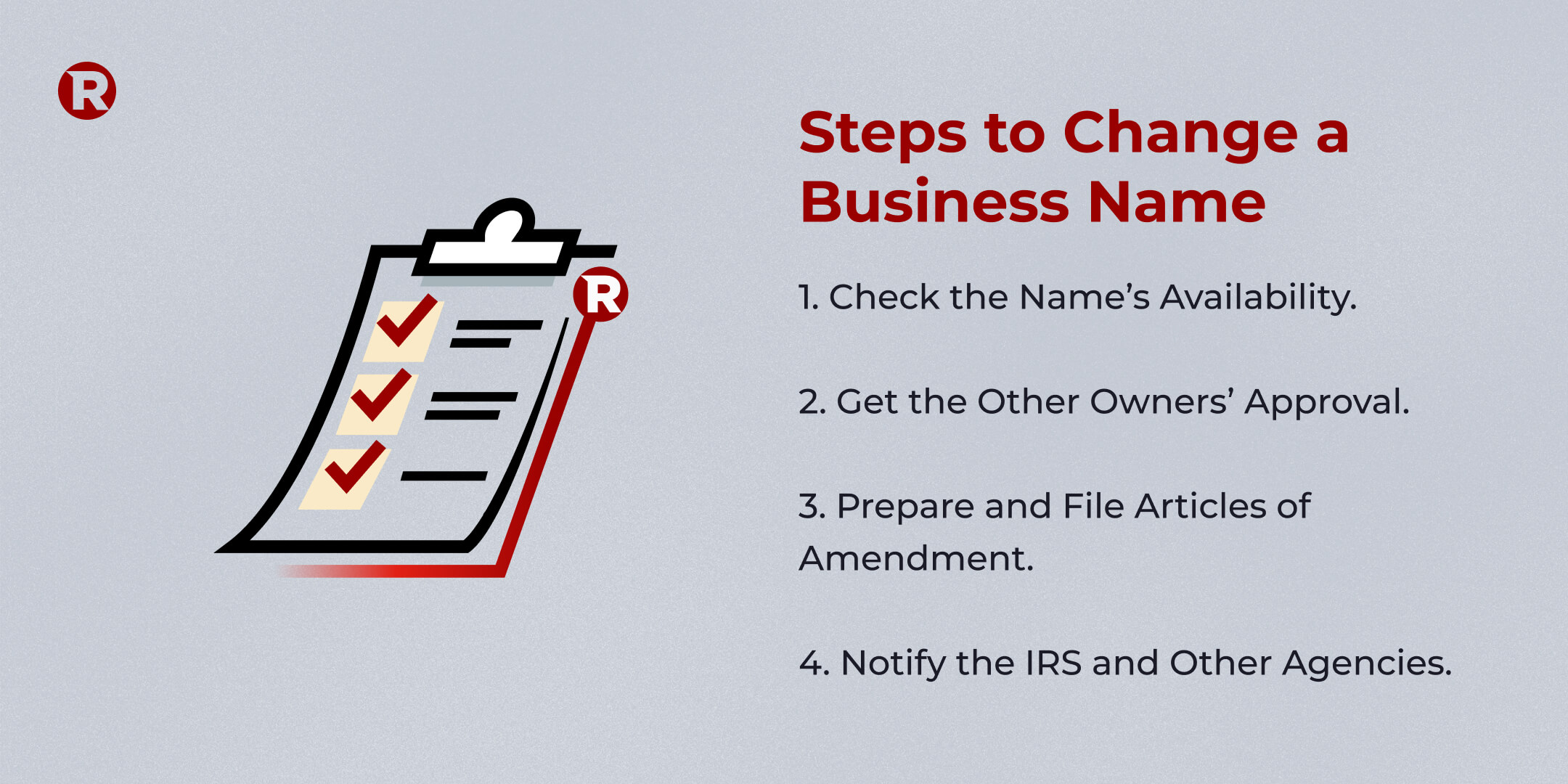Step-by-step guide:
How to change a business name
Choosing the right business name is crucial. Learn your options for changing it and how to update your brand effectively.

You can change your business’s name by filing an amendment to your business formation documents. You can also use an assumed business name (a “fictitious name” or “trade name”), known as a DBA.
Choosing a name is one of the most important decisions you will make as a business owner. Your business name is essential to creating a brand and building customer loyalty. Sometimes, though, a business owner finds that the name they chose is not working out. You have several options for changing the name of your business. Let us guide you through them.
Can I Change the Name of My Business?
Yes, you can change the name of any business entity. The process can be reasonably straightforward, at least for the name change itself. You’ll need to check whether the new name is available in your state. If you are not the only business owner, you will also need to follow your business’s procedure for making significant business decisions. If you have a legal business entity like an LLC or corporation, you will have to amend your formation documents.
When Is a Business Name Change Necessary?
Changing a business name is a significant decision that will affect every aspect of your business. You might decide it is the right path for reasons related to your business strategy. Examples of situations that might lead to a business name change include:
- Efforts to appeal to a new or broader audience.
- Relocation, such as if a business whose name includes the name of a city moves or expands to a new city.
- Negative publicity associated with the current name.
- Poor performance under the current name.
- Ownership changes in a professional firm, such as when a law firm partner leaves or a new partner joins.
How Can I Change My Business Name?

1. Check the Name’s Availability
The name must be available in every state where your business operates. Each state’s Secretary of State office has a database of registered businesses. You can search those databases to see if the name you want is available. You can’t use the name if another business is already using it, or if it’s too similar to an existing name.
2. Get the Other Owners’ Approval
Changing the business’s name is a major decision that requires a vote of the owners. Your business’s governing documents may have instructions on how to vote on this type of issue. If not, state law provides a procedure you must follow.
3. Prepare and File Articles of Amendment
The business name is usually listed at the top of your original formation documents, such as Articles of Incorporation (for a corporation) or Articles of Organization (for an LLC). Changing the name requires you to amend that document. You can do this by filing Articles of Amendment with the new business name in the state where your business is based. The filing fee is often the same as it was for the original formation documents.
You may also need to file amendments in every state where you have registered as a foreign business. This is often necessary if you have a physical presence in another state.
4. Notify the IRS and Other Agencies
You must notify the IRS of your business’s name change. You may be able to do this on your annual tax return. For some types of businesses, you must notify the IRS separately.
Banks and vendors must also be notified to avoid issues with checks and contracts, and you might want to keep in mind local or state agencies that issued your business’s licenses or permits as well.
Are There Other Ways to Change Business Names?
Yes—another option is to register an assumed name for your business. This is also known as a DBA (“doing business as”). Your business keeps its original legal name, but it can do business using the assumed name. You may be able to file a DBA with the Secretary of State or a county clerk’s office.
Registering a DBA is typically less expensive than filing Articles of Amendment—but a DBA alone doesn’t change the official record. If you want to truly change the legal name, you must file the Articles of Amendment. A DBA is also only temporary: most states require businesses to renew DBA registrations every few years. If a DBA is not working out, you can simply let it expire.
One disadvantage to using a DBA is the potential for confusion. Your business’s brand might become tied only to the DBA, and people may not recognize its legal name. A DBA also does not provide liability protection or ownership rights beyond the existing legal entity. It’s only a filing for name use.
Keep in mind that changing your business name starts with filing the proper amendment to your formation documents. Visit our Articles of Amendment page for all the guidance, resources, and tools you need to get it done right. And if you’d prefer personalized support, a Rocket Legal Pro is just a click away to help guide you through the process.
Key takeaways
|
Additional resources
Learning how to enforce a contract is just one step. Explore these additional topics to learn more and take the next steps.
Disclosures
- This page offers general legal information, not legal advice tailored for your specific legal situation. Rocket Lawyer Incorporated isn't a law firm or a substitute for one. For further information on this topic, you can Ask a Legal Pro.